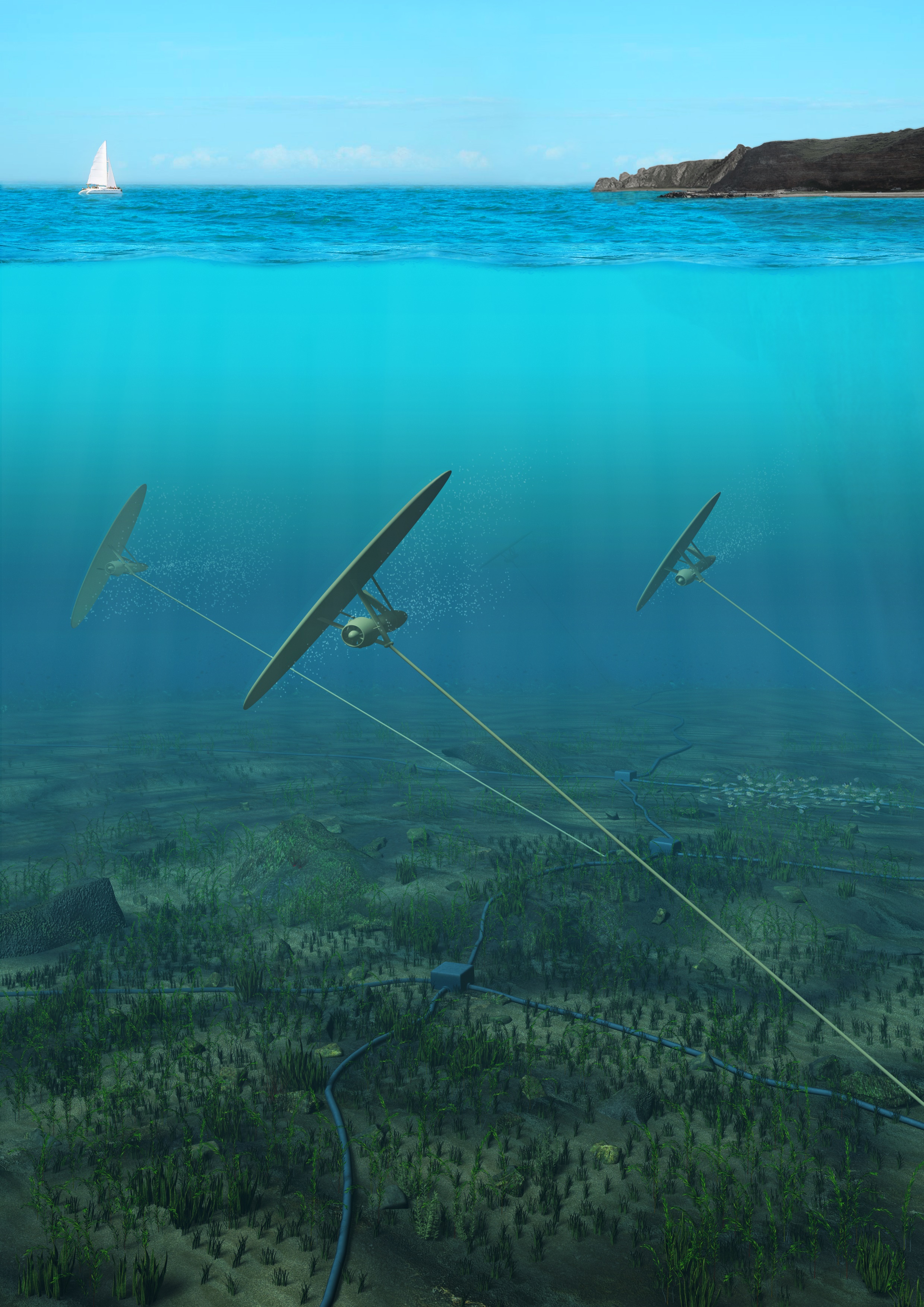The next wave in renewable energy
One of the biggest European investments in ocean energy, the first commercial scale underwater “kite” power plant is being built off the coast of Holyhead, Wales. "Tidal energy is sort of an underwater version of wind energy", explains Stefan Björklund, an assistant professor in machine design at KTH Royal Institute of Technology in Stockholm.
An artist’s rendering of the underwater kites as they could appear in the first commercial scale ocean current energy conversion plant off the coast of Wales. (Image: Minesto)
Björklund is involved in the 10 megawatt Deep Green plant being built in partnership with Swedish marine energy company Minesto and civil engineers McLaughlin & Harvey. Deep Green recently secured EUR3.5 million from KIC InnoEnergy, and an additional EUR13 million from the European Regional Development Fund.
These underwater, winged turbines are anchored below ocean’s surface. "Their speed exceeds the speed of ocean currents by a factor of between 8 and 10", Björklund says. “You keep the kite moving in a figure eight pattern, to keep up the high speed.” The ocean currents are relatively slow at between 4-9km/ h. But they’re also steady and water is much denser than air, which means it provides much greater constant force.
Electricity is produced in the generator, and transmitted through a cable in the tether attached to the wing. The electricity continues in sub-sea cables on the seabed to the shore. The 500kw kite has a 12m wingspan and must be anchored at a minimum depth of about 60m, to ensure that ships can pass above them.
Unlike windmills however, underwater kites do not need gears. According to Björklund, that poses a challenge: “When working with generators, it’s always good to have high speed. With wind power you need a gearbox to increase the speed of the generator, and that’s become a problem for the wind industry. Windmills need big parts because the torque through the system is much higher.”
The KTH team is performing mechanical simulations and calculations for subsystems of the kite, with most of the work beginning next year. The prospects are good, however, harvesting energy from the sea is always a hard task. “The environment out on the sea is very harsh, and they always find problems when they try to put inventions in the sea”, completes Björklund.






